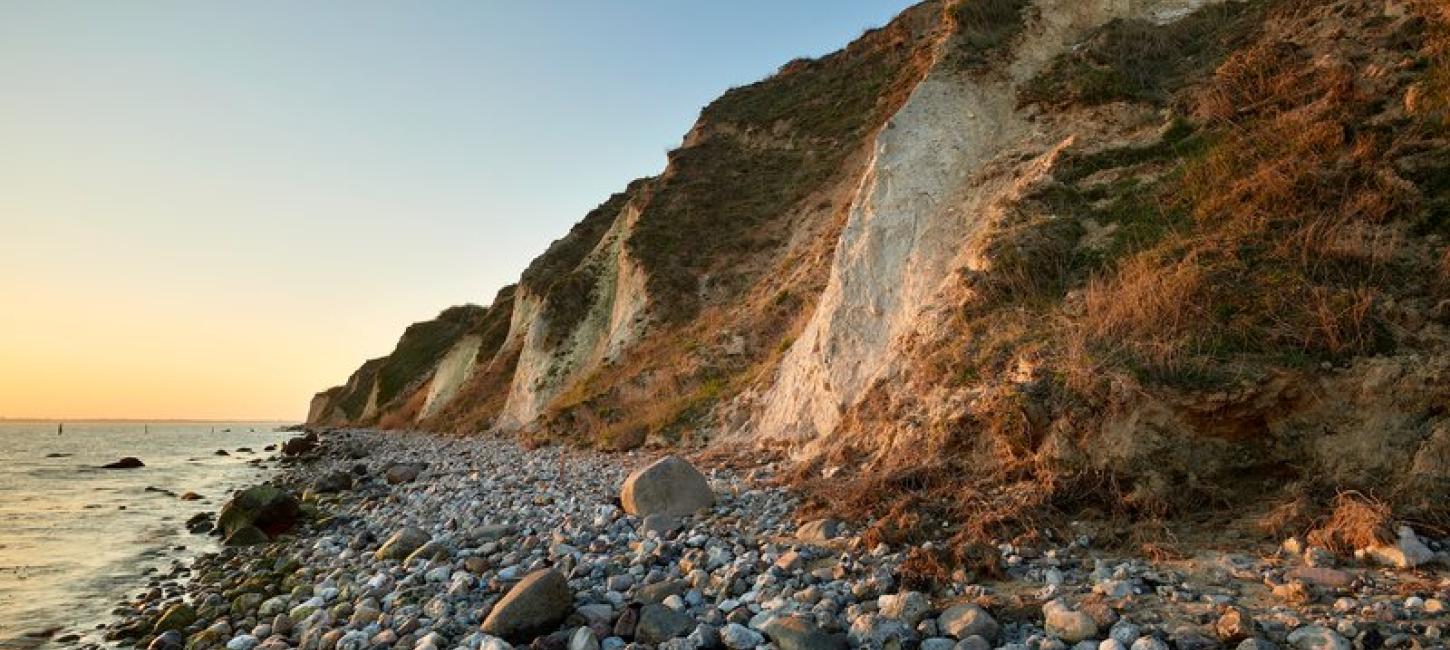
Tour 14: A walk along the cliff, dynamic coastal landscapes, and a visit to Skovsgård
The two kilometre long and 28 metre high Ristinge Klint (Ristinge Cliff) is a breathtaking sight, and from here you can walk along the coast to Ristinge hale. After enjoying the sea breeze, we recommend a visit to Nature Destination Skovsgaard.
Ristinge Klint (Ristinge Cliff) is a breathtaking sight that invites you to stroll along the coast. On the beach you can find many different types of rocks, and the cliff reveals beautiful lake and sea deposits from the last interglacial period (Eemian) as well as layers from four glacial advances during the last ice age (Weichsel). In some places, even moraine clay from the end of the penultimate ice age (Saale) has been found. The cliff is therefore of great importance to our knowledge about the last 140,000 years of landscape history as well as climate and environmental changes.
Walk along the coast to Ristinge Hale, a living example of the archipelago’s dynamic coastal landscapes. Ristinge Hale consists of materials from Ristinge Klint that have been carried here by the current and it continues to grow as more sand is deposited. Continue all the way onto the flat landscape with salt marshes and rich bird life. Access is prohibited from March 1st to July 15th due to the many breeding birds.
Having enjoyed the refreshing coastal air, we recommend heading eastwards to Nature Destination Skovsgaard. Here, you'll find plenty of nature experiences, activities for the whole family and a café in a beautiful setting that serves lunch dishes based primarily on vegetables grown in Skovsgaard's own fields.
Time required
Minimum 4 hours
Recommended means of transport
Bike, car or bus and by foot - the walk along the cliff to Ristinge Hale and back is approximately 6 km. The distance from Ristinge to Skovsgaard Nature Destination is 11 km.
Special notes
Please note that there is no access to Ristinge Hale from 1 March to 15 July due to the many breeding birds.